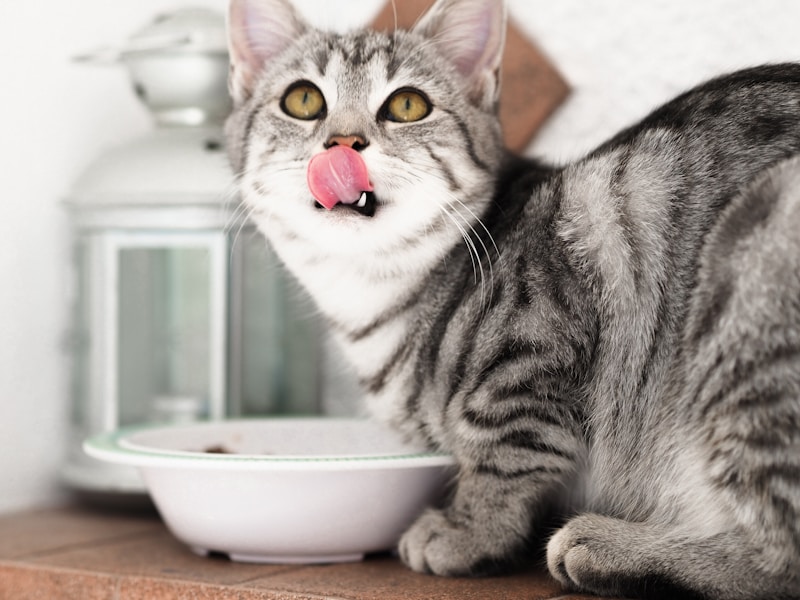Feeding your pet seems like a simple task, but it’s one of the most important responsibilities you have as a pet owner. The frequency and portion of meals can significantly affect your pet’s health, energy levels, and longevity. Whether you’re caring for a dog, cat, or other companion animal, understanding their nutritional needs is essential to ensuring a happy and healthy life. Below, we’ll explore how often you should feed your pet based on species, age, size, and lifestyle.
Feeding Dogs: Size and Age Matter
Dogs come in a wide range of sizes, from tiny Chihuahuas to giant Great Danes, and their feeding schedules should reflect that. Puppies generally need to eat more frequently than adult dogs due to their rapid growth and high energy levels. For instance:
-
Puppies (under 6 months): 3–4 meals per day
-
Adult dogs (over 1 year): 1–2 meals per day
-
Senior dogs: Usually maintain the adult schedule unless advised otherwise by a vet
Small breed dogs often have faster metabolisms, meaning they burn calories quickly. This makes it essential to feed them more frequently—often twice a day—to maintain energy. Large breed dogs may do better on one or two meals daily to prevent issues like bloating.
Always use a high-quality commercial dog food appropriate for your pet’s life stage, and avoid free-feeding unless advised by a veterinarian. Regular, measured meals help prevent obesity and provide a routine your dog can rely on.
Feeding Cats: Frequent Small Meals Work Best
Cats are natural grazers and hunters, accustomed to eating multiple small meals throughout the day. In the wild, they might hunt and eat 8–10 small prey animals daily. While domestic cats don’t need to hunt, their digestive systems are still adapted to this frequent feeding pattern.
-
Kittens (under 6 months): 3–4 meals per day
-
Adult cats (over 1 year): 2–3 small meals per day, or free feeding with portion control
-
Senior cats: Continue the adult schedule unless health issues dictate otherwise
Free feeding (leaving dry food out all day) is common among cat owners, but it can lead to overeating and obesity if not monitored. Measured portions are typically a better option, especially if your cat has weight issues or is on a special diet.
Wet food is often recommended for hydration and urinary tract health, so incorporating at least one wet meal a day is ideal. Make sure fresh water is always available.
Feeding Other Pets: Birds, Rabbits, and More
Many people have pets beyond cats and dogs, such as birds, rabbits, guinea pigs, or reptiles. Each of these animals has unique dietary needs and feeding schedules.
-
Birds: Should be fed once or twice daily, with fresh fruits, vegetables, and a balanced seed or pellet mix. Remove uneaten fresh food after a few hours to prevent spoilage.
-
Rabbits and guinea pigs: Need unlimited hay, fresh vegetables daily, and a small amount of pellets. Feed them twice a day and make sure they always have access to clean water.
-
Reptiles: Feeding schedules vary widely depending on species. Some eat daily, others only once or twice a week. Always research the specific needs of your reptile.
Understanding your pet’s natural behavior and biology is key. Consult with a veterinarian familiar with exotic animals to ensure you’re meeting their nutritional needs.
Signs You’re Overfeeding or Underfeeding
Knowing when you’re feeding too much—or too little—is just as important as knowing how often. Common signs of overfeeding include:
-
Weight gain or obesity
-
Lethargy
-
Excessive stool output
Signs of underfeeding may include:
-
Weight loss
-
Constant hunger or food aggression
-
Dull coat or low energy
Routine check-ups with a vet can help you catch these issues early. They can also provide guidance on portion sizes based on your pet’s age, activity level, and overall health.
Conclusion
Feeding your pet the right amount at the right frequency is essential for their overall health and well-being. There’s no one-size-fits-all answer, as dietary needs vary greatly between species, breeds, and individual animals. By understanding your pet’s specific requirements and consulting your veterinarian regularly, you can create a feeding routine that supports a long, vibrant life. After all, a well-fed pet is a happy pet.

